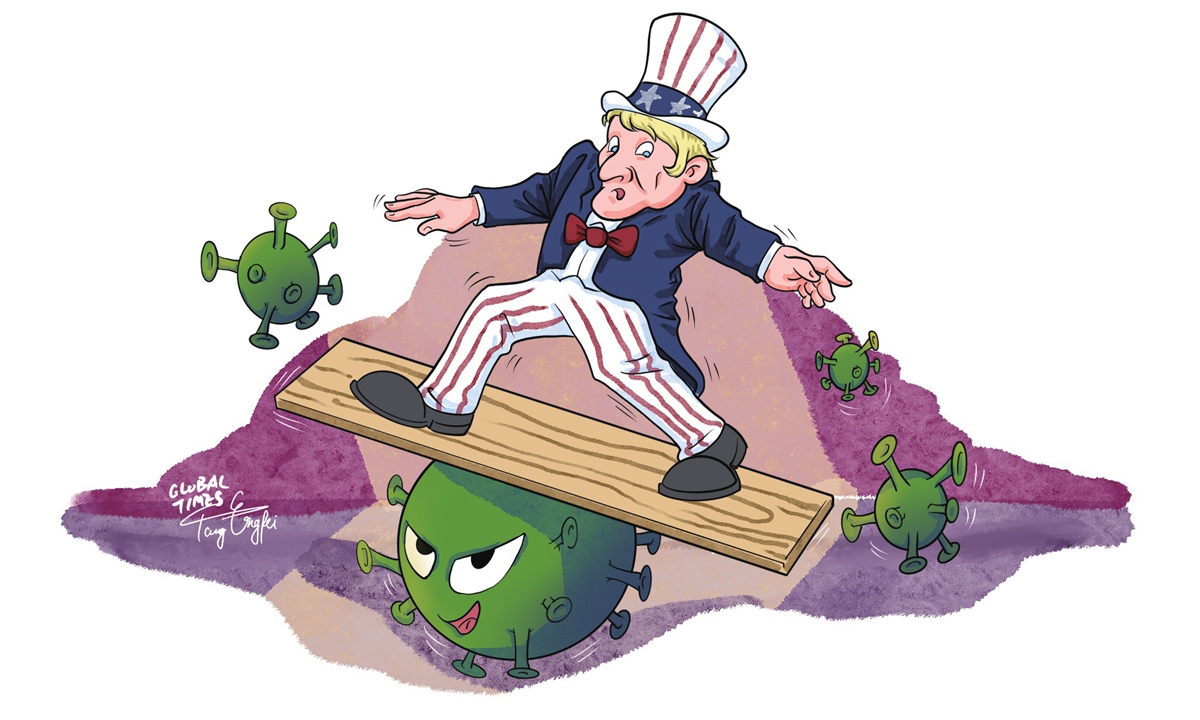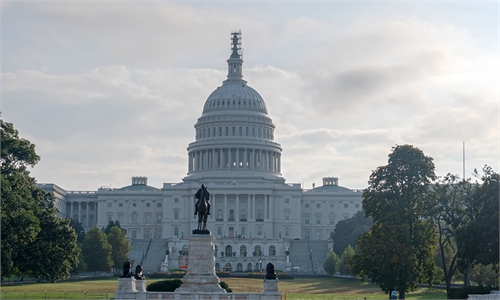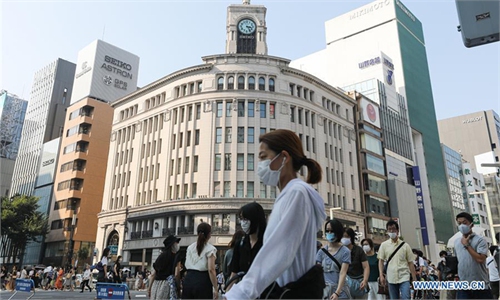COMMENTS / COLUMNISTS
Omicron lays bare US’ fragile economic recovery, China’s resilience

Illustration: Tang Tengfei/GT
If there was still any question about China's solid economic resilience or the US' fragile economic recovery from the COVID-19 pandemic, the two countries' vastly different reactions to the emergence of the Omicron variant should offer an unmistakable answer.
On Thursday, what US officials and markets fear the most appeared to becoming increasingly real, as the country reported its first case of the Omicron variant of the coronavirus. Much remains unknown about the new variant or its spread within the US. But the mere news of the variant has once again plunged the US into a panic mode this week.
Following a widespread stock sell-off amid fear of the Omicron variant, US President Joe Biden on Tuesday sought to reassure markets, saying the new variant was a cause for concern, but "not a cause for panic." He vowed that the US would "face this new threat just as we've faced those that have come before it."
Given the US' track record on containing the virus over the past couple of years, Biden's reassurance evidently did not inspire much confidence. Volatility lingered on the Wall Street, and Biden's own economic officials continued to sound the alarm over potential threats to the US economy.
Jerome Powell, who just this week has been reappointed by Biden for a second term as the US Fed chair, warned that the Omicron variant may threaten the US' economic recovery. "The recent rise in COVID-19 cases and the emergence of the Omicron variant pose downside risks to employment and economic activity and increased uncertainty for inflation," Powell testified at the US Congress.
Apart from Omicron, the profound fear among US markets also stems from Powell's hawkish tone on rolling back stimulus. As US inflationary pressure continues to mount and has already inflicted a significant burden on US households, Powell has no better option than phasing out the massive stimulus. Still, that did not sit well with Wall Street. So far this week, the S&P 500 is down 2.52 percent, while the Dow Jones Industrial Average has lost 2.87 percent. The NASDAQ Composite is down over 3 percent.
Then, there is still the whole US debt issue. In testimony to the US Senate, US Treasury Secretary Janet Yellen urged Congress to raise the US debt limit, a highly partisan issue within the US with no clear solution in sight, warning that failing to do so would "eviscerate" what she described as the US economy's "quite remarkable" recovery from COVID-19.
US officials, including Biden, had been dismissing inflation and other challenges for months until they became so prominent and impossible to ignore, while boasting about the US economic recovery, but reality tells a different story, especially when compared to the world's second largest economy.
In stark contrast to the US' panic over news of the Omicron variant, Chinese officials and markets have displayed calm and confidence. Over the past several days, while officials have urged caution against the new variant, markets have remained stable. Following a plunge at the end of last week, the benchmark Shanghai Composite Index has gained over 1.4 percent so far this week, while the Shenzhen Component Index is up over 1.1 percent.
In addition to China's experience in reining in COVID-19, market confidence also lies in the solid resilience of the Chinese economy in the face of risks and challenges. This week, official data showed China's manufacturing purchasing managers' index (PMI) rebounded to 50.1 in November, reflecting an expansion in factory activity and ending a two-month contraction. That's significant especially against the backdrop of a series of challenges, including power shortages and surging production costs.
That's not to say that the Chinese economy is not without challenges. A private survey, which focuses on smaller manufacturing firms, showed on Wednesday that the manufacturing PMI remained in contraction territory in November, indicating ongoing challenges for small and medium-sized enterprises (SMEs). However, the bottom line is that Chinese officials have already made addressing the issues faced by SMEs a priority and possess the necessary monetary and fiscal policy tools to do so.
Contrary to US officials' wild swings when it comes to monetary policies, Chinese Vice Premier Liu He said during a speech on Tuesday that China will maintain consistency, stability and sustainability in its monetary policy. And different from concerning signals for the US' economic recovery, Liu said that China's economic growth will likely exceed expectations this year and "we have full confidence" in China's economy next year.
The author is an editor at the Global Times. bizopinion@globaltimes.com.cn




